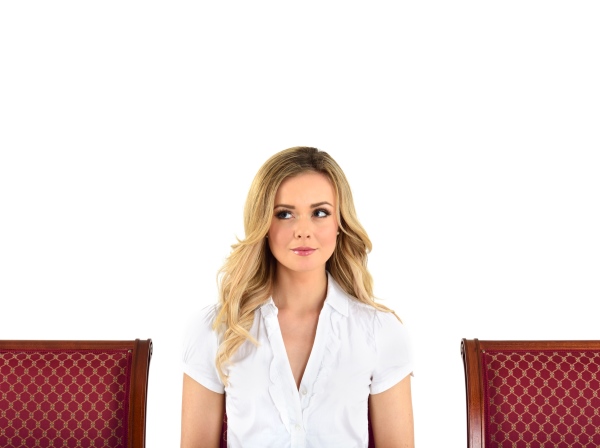
What place (if any) does discrimination on the basis of physical appearance have in the beauty industry, asks Michelle Blewett.
Good managers understand that discrimination, on the basis of certain inherent attributes of an individual, is not just unlawful, but unproductive.
The decision to hire, promote and dismiss should be based on merit and performance; not just because this will ensure the business is not breaking workplace anti-discrimination laws, but because these principles ensure that prejudice does not get in the way of productivity.
In other words, the best person for the job based on merit should always be hired and promoted, as this person should yield the best results for the business.
Nevertheless, the beauty industry is in the business of aesthetics and, accordingly, judgments about a current or potential employee’s physical appearance may, in some cases, be an ‘inherent requirement’ of the role.
It is accordingly useful to understand that ‘physical appearance’ is not an attribute which is directly protected under anti-discrimination legislation at the Federal or State level.
This means that theoretically, an employer could decide not to employ someone because they were too tall, short, overweight or wore too much or too little makeup, and that person would have no recourse under anti-discrimination legislation.
However, if the job applicant could prove a nexus between their physical appearance and an attribute that is protected by anti-discrimination legislation, they may have legal recourse.
For example, it would not be lawful to make management decisions about an individual because their physical appearance was of a certain gender, race, colour, sex, or that they displayed symbols of affiliation with a certain religion, were of a particular sexual orientation or had a physical disability.
Further, it is lawful to discriminate, even on the basis of a protected attribute, if that attribute is required for a person to carry out the ‘inherent requirements’ of the role.
The ‘inherent requirements’ of a job may include the ability to perform the tasks which are essential to perform a job productively and to the required quality, the ability to work effectively in a team or other organisation, and the ability to work safely.
At present, it is the industry norm for models and actors/actresses to be required to meet certain physical requirements.
Indeed, all briefs in these professions would require that a model or actor/actress be of a particular gender, sex or ethnic appearance.
If challenged, employers of models and actors/actresses would argue that these are ‘inherent requirements’ of the role.
Another example of where an employer may lawfully discriminate on the basis of a protected attribute is a Thai massage clinic specifying that all employees be of a Thai background. This is because the massage clinic could argue that only a therapist of Thai ethnicity could have the required skills to perform Thai massage techniques.
In contrast, it would be harder for that employer to argue that it is an inherent requirement of a make-up artist’s role to be of a certain gender, sex, race or colour.

Readers may remember that Lorna Jane was the subject of social media backlash for a job advertisement posted in July 2015, where the company advertised for a ‘receptionist/fit model’ and specified that the successful candidate must have specific bust, waist, hip and height measurements.
The rationale was that these measurements were required ‘in order to accurately provide feedback on Lorna Jane products in a size small’.
The company stated that the successful candidate’s week would be split between ‘receptionist duties and assisting our Design Team with fittings of new garments’.
The advertisement is carefully worded and appears to be an attempt to ensure that it technically did not breach anti-discrimination laws.
By fusing the modeling and receptionist roles together, Lorna Jane ensured that it could hire a female with specific physical attributes without breaching anti-discrimination laws.
Lorna Jane ultimately revoked the advertisement after social media backlash. This case shows how discriminating on the basis of physical appearance may be technically lawful, but cause PR headaches.
It is also useful to note that an employer may rely on the ‘special measures’ under Federal anti-discrimination legislation, or apply for an exception from State anti-discrimination legislation to engage in targeted recruitment of a particular demographic.
Special measures are also known as acts of ‘positive discrimination’ or ‘affirmative action’.
For example, a business could hypothetically offer a male-only sauna service (similar to Banyas in Russia, or Onsens in Japan), and only hire men, as men are underrepresented as employees of spas.
If this business was to advertise for men in NSW, it would need to apply for an exception from the Anti-Discrimination Act 1977 (NSW) and make the case that being a man was a ‘genuine occupational qualification’, and show how targeting the service to men only would help provide equal opportunity.
If the employer’s application was successful, it should state in the advertisement, ‘[Name of employer] considers being a man is a genuine occupational qualification for this position under s 31 of the Anti-Discrimination Act 1977 (NSW)’.
It could also rely on the ‘special measures’ under the Federal Sex Discrimination Act, and argue that targeted recruitment of men to work in spas is required, to improve gender quality in the industry.
It is important to note that while a business must apply in advance for a ‘special measure’ under NSW State legislation, prior to conducting a targeted recruitment campaign, there is no such process under Federal legislation.
Under Federal legislation, the employer can only rely on ‘special measures’ if challenged by way of defense against an anti-discrimination claim.
The distinction between physical appearance, and ‘protected attributes’ under anti-discrimination, along with relevant exceptions, can be very fine indeed.
It is understandable that in the beauty industry, certain discrimination on the basis of physical appearance or protected attributes may be an ‘inherent requirement’ of the role in certain circumstances.
If you require guidance on navigating the labyrinth of regulations governing this issue, please do not hesitate to get in touch with the Workforce Guardian team.
Michelle Blewett is a senior HR advisor and employment lawyer. She advises business leaders on building successful teams, and managing issues such as discrimination, illness and injury, bullying, and unfair dismissal and underpayment disputes.
Phone: 1300 659 563 Email: michelle.blewett@workforceguardian.com.au

